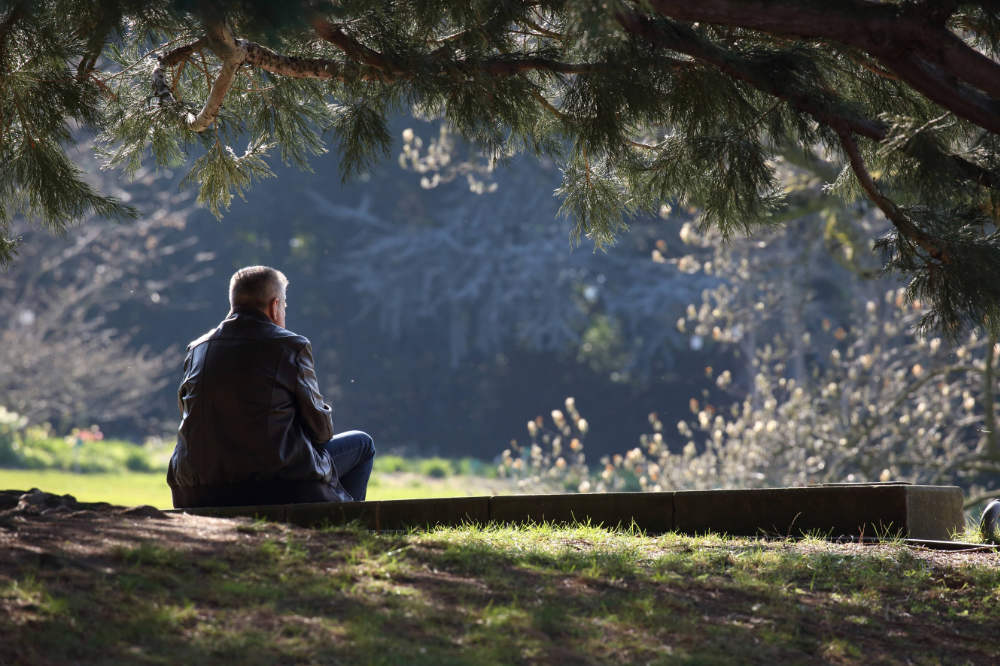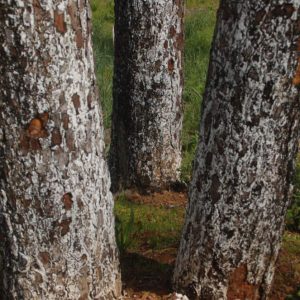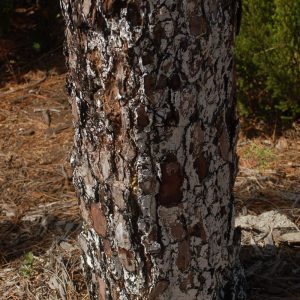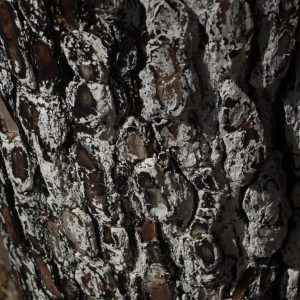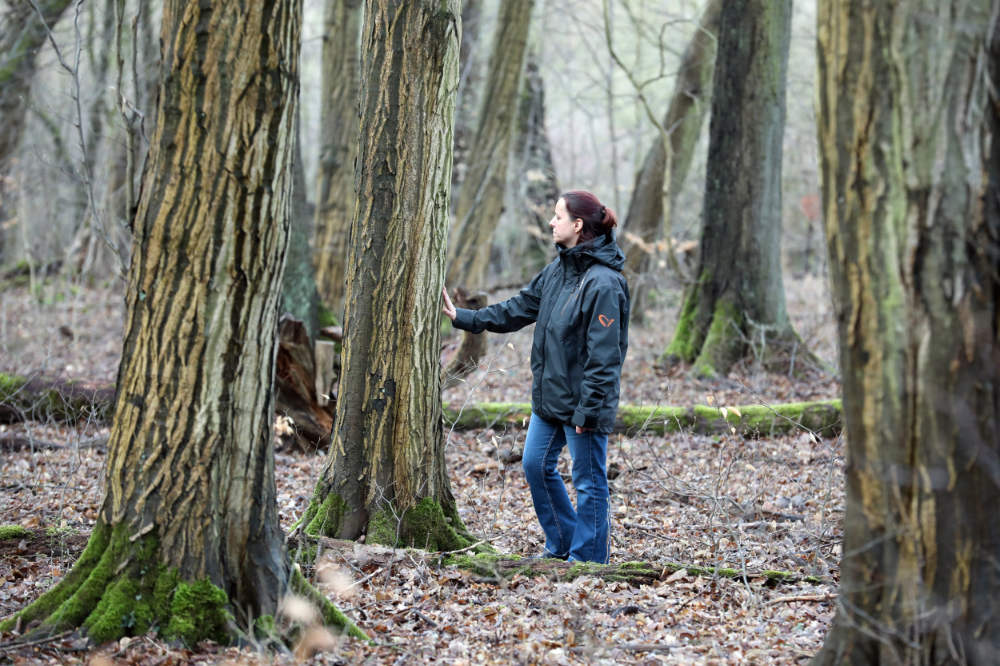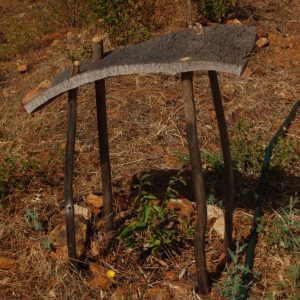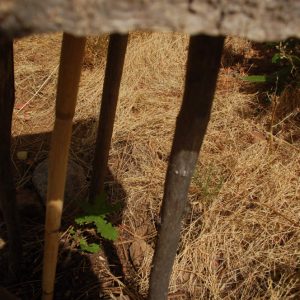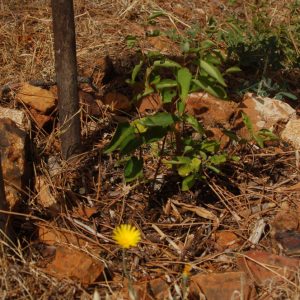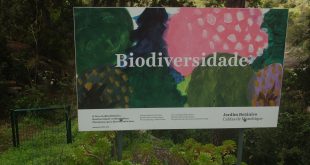Saturday the 24th July 2021
Avoiding emissions, reducing our footprint… – life today is really a lot about mindfulness. Mindfulness? asks one of ours volunteers who comes in on a Friday morning to water the trees she looks after in the Botanical Garden. What is it I should be mindful of? The birds in the forest, for instance. Listen to this nightingale over there singing its song. Remember its song, make it your own. This, claims 84-year-old German professor Gernot Böhme*, is to find art in ecology. Böhme is virtually unknown in Portugal to date, his many books not available in Portuguese. And why would they be? Do we need nature in Portugal? Why don’t we just stick to turning trees into paper? Now, observing this variety of small trees and finding out how they are doing is a skill. Is anyone able to do this? It’s indeed possible if you allow yourself to commit to it. Living with and in nature rather than alienated from it, to imagine oneself as a part of nature, which is something people in the city don’t understand (there is a lot of talk about waste separation), to be holistically and entirely one with yourself, staying true to yourself and allow yourself to gently slip into this state. Call it meditation if you like, which after all is all about becoming one with nature; yes, that’s something I find fascinating.
Here’s an example: you might try digging your fingers into the soil while harvesting your potatoes (without availing of a hoe for once), as you have accompanied those potatoes throughout their period of growth. Your fingers are feeling for a potato, then for another one and so on – you have the soil between your fingers and can appreciate its satisfying texture because you look after the plants in your garden and water them (tomatoes, courgettes, peppers, cucumbers, onions, beans, and so forth). I don’t know about you, but more often than not I will forget to clean my fingernails before I go on to interview a mayor or other such luminary in my role as a journalist. My day job is indeed being a journalist. But the first thing I do every day is check the trees and ask every one of the ones I cross along my path how they are managing with this heatwave at midday and the changes in temperature, as I can see that the pine trees are shedding part of their needles when they are experiencing stress. Recognising the signs of the times also means I recognise that circular hole in the bark and know that this is the handiwork of the bark beetle. The thing is the bark has suffered in the forest fire, the tree is weakened. We were able to quickly extinguish the fire that was trying to creep up the tree, but the lower part of the bark is blackened. And that’s not usually the case. So when the sun is shining on it, this black spot becomes a lot hotter than the normal bark. A tree like this is alive, and doesn’t really appreciate this heat down there either. And the beetle knows that and attacks. The forest is ancient and that tree over 20 metres tall. I am its friend and it is mine.
So I grab hold of a paint brush, a bucket with lime and water and cover the exposed roots, as well as the lower part of the trunk, for as far as I can reach I paint the bark white. Lime is a disinfectant. Every tree that was attacked by the fire is now sporting a white sock. At some point a group of hikers from the city come by and ask why am I painting the forest white? So I explain my forest art amidst nature, and they start to chat about art within nature, removed and separated from it, and as something observed from the outside. As they carry on their merry way I go back to applying myself to my tree which was planted by António de Encarnação’s father in the year 1905, and has been watching the world for the past 116 years, has seen all those years go by from its allotted spot, showing a lot of patience. A little immobile, that’s true, but tenacious, holding out in Caldas de Monchique, simply missing the big wars of the past century. And the Covid-19 virus is of no interest to it either. People are taking themselves far too seriously, I gather from what the tree is telling me one morning. But the bark beetle is getting to it, and it is likely to perish from it, just as we humans will perish from climate change.
Good times, bad times
The high points in the life of my friend the tree were of a different nature, they were no absolute high points nor absolute low points. It is not manic-depressive, to the contrary, it has always been quite equanimous, but with each passing year water is becoming more scarce in summer, and there are no longer those four seasons which each year used to bring. It can feel the slow creeping change in the climate, which people don’t notice as the enormous, the dangerous thing it is. Those who like to observe things on a large scale, using technology and modernity, what they call progress, those who enjoy visiting the major art exhibitions and have themselves catapulted into space, should start at a really small scale, with observations, searching for clues. As for myself, I usually do this in the morning with a tree that needs me. Good morning my friend, how are you?
Then I’ll also grab some neem oil to spray its circular wounds. And I observe my neighbours’ forest, its pine trees all dead and slowly collapsing. Burnt and eroded by the greedy bark beetle. Who cares? After the storms. Over time, they all go, because no one cares about nature anymore. Nature and trees mustn’t be degraded to mere objects to make money from. Nor must we humans become mere objects. Are we really only worth something when we can prove our money’s worth? Or do we still have values such as friendship and commitment?
I became a founding member of a cooperative for a reason: I believe that this community will live on when I, when we are gone – also and particularly because our prime mover is not money but nature. All of us in this collective are looking after the forest to protect this habitat stretching across two hectares with a brook running through it (the property has a V-shaped layout), to gently replant new trees of many different species that existed here once upon a time before the forest fires. To observe them to determine the right soil for an alder tree, an ash tree, a beech, an oak, an elm.
Summer is the most difficult time of the year. Planting time is November and over the rest of the winter. Now in summertime we are working intensively with each tree, to help it be in this world and stay in it; at temperatures of 37 degrees Celsius and over the border between wakefulness and a state of fever starts getting blurred. The chirping of the cicadas is our constant companion, all day long. Music to our ears! We are building shade roofs using cork – on stilts of acacia wood. I am talking to the volunteer to try and explain this feeling you can develop for a small tree that makes you want to know how it is doing, whether it’s a ginkgo or a chestnut, a walnut tree or a she oak. Or the cedars up above, from where you can look down into the valley (i.e. from a dry zone to the wetlands) and where you may rest and gather your thoughts and can feel yourself growing taller in the attempt to become one with nature. The best time to do this in summer is very early in the morning or at dusk, in the early evening, when you feel that everything is awakening or indeed everything is settling down to rest. Only when you find this calmness – we can also call it balance – inside of you will you renounce all those CO2 emissions, will you ask yourself whether your really need to take this or that trip, to visit all these different places. It is then that you will start questioning your energy consumption and only then will you feel what it means to breathe in exhaust fumes from the burning of coal, oil and gas. It’s only at that point that you will question your own positions and whether you really want to eat dead animals every day? Nature is my friend, my habitat, and biodiversity is a part of it. Whereas in a eucalyptus forest amidst a monoculture I am all alone, out on a limb, and running out of water fast …
 Eco123 Revista da Economia e Ecologia
Eco123 Revista da Economia e Ecologia

